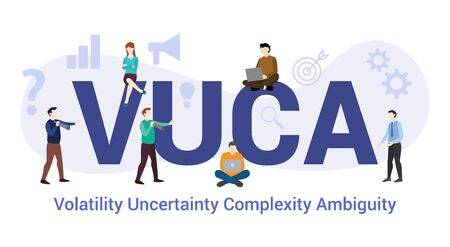To describe the chaotic post Cold War world, the American military coined the term ‘VUCA’ which is now relevant, not only on the battleground but also in the challenges of everyday life. Culture and society today has changed drastically in an era of:
Volatility: the rate at which change occurs in economy, polity or the world in general
Uncertainty: the inability to predict the future
Complexity: the myriad factors that are interconnected and impact us
Ambiguity: confusion as to how to interpret global events and day to day occurrences.
Coping in the VUCA world is a herculean task for teenagers today as the older generation is also grappling with these unfamiliar changes and are struggling to provide adequate guidance. Kateryna Voronkina aptly terms this the ‘Age of Anxiety’ and suggests certain measures for surviving the same. With the population explosion, understanding resource scarcity without viewing it as a limitation is a key point and the first step towards redeeming oneself. Instead of fighting for resources to fulfil impulsive needs, adolescent kids are encouraged to pursue goals that have a long-term positive impact. Lifestyle changes are a necessary second step to guarantee a balance of chemicals in the brain. Giving up resistance to change and adopting an attitude of acceptance, where you can choose to take the reins in your life instead of being steered by fate, makes a powerful difference. A survey of UK teens suggested that they have extremely high aims for themselves to reach certain milestones within rigid timelines. For instance, they hope to buy a car by the age of 20 and attain their dream job by 25. The force of such expectations demand caregivers and teachers to mould learners to be ready for the future. Academic institutions should take a proactive approach in imparting skills such as risk taking and leadership, which will help learners employ meta-cognitive skills. Effectively coursing through life in a VUCA world has been attributed to one’s level of learning agility which constitutes nine key factors: flexibility/ adaptability, speed in comprehending novel concepts, collaboration, active information seeking, feedback gathering, self reflection, risk taking at the interpersonal level and in the domain of performance. Adults need to architect a new consciousness such that adolescents don’t merely survive change, but they thrive on change. If learning has to be agentive, the conversation needs to shift to interdisciplinary teaching, acquisition of emotional and social skills that build resilience, cultivating growth mindsets and encouraging collaboration through service learning. Talks on creativity, survival skills and on having a motivational mindset, especially in the context of academia and the millenials, is a big step in this direction. Teenagers worldwide need exposure to complex subjects of global relevance that have far reaching consequences. It is important that they are guided through conversations that they might be viewed as overwhelming or depressing, in a manner where they can see the light at the end of the tunnel. In this manner, the makers of the future can not only envision a bright tomorrow but be eager to actively engineer it.
Roshni Ramanan
WOW(Wisdom of Words)

